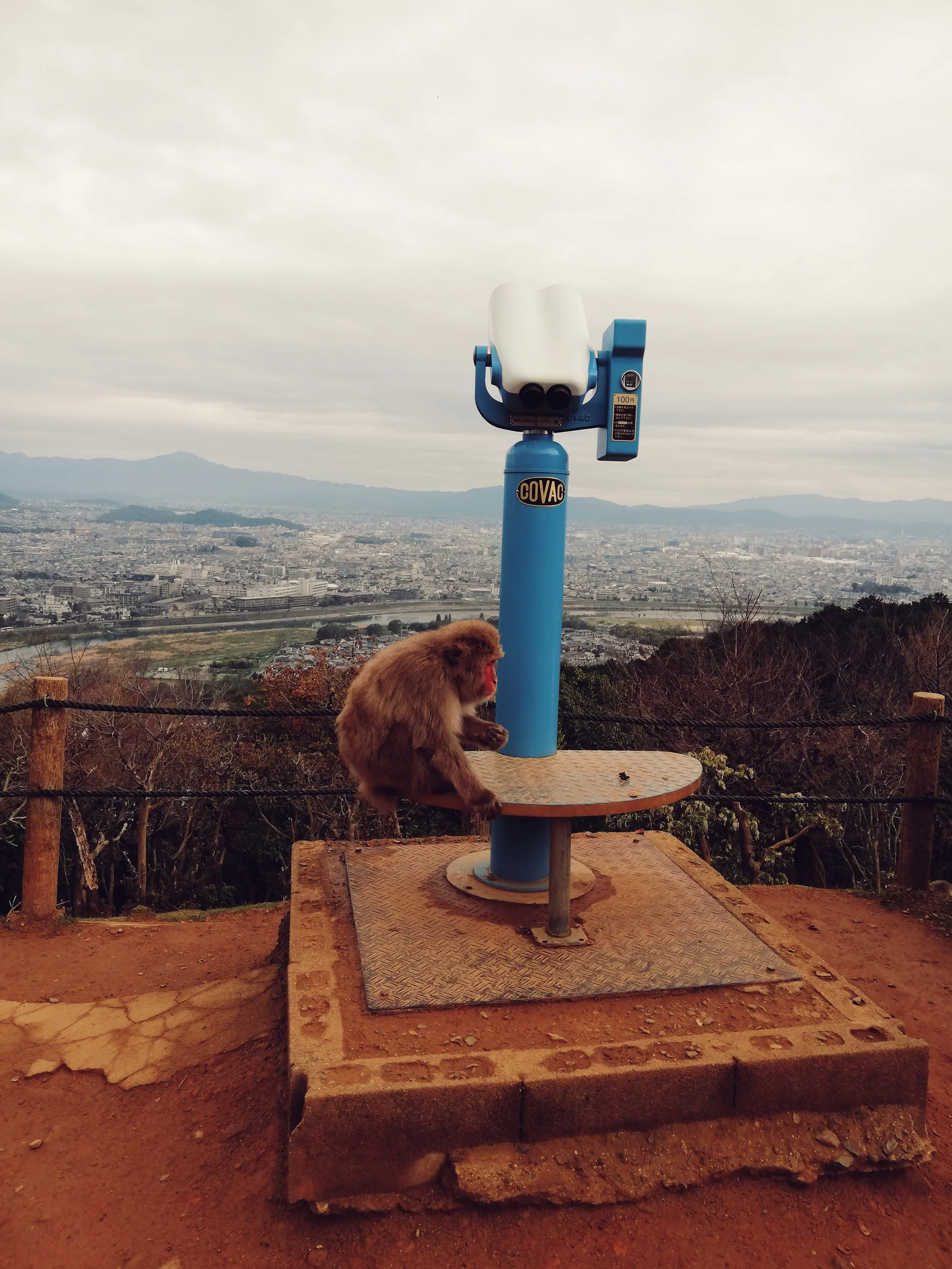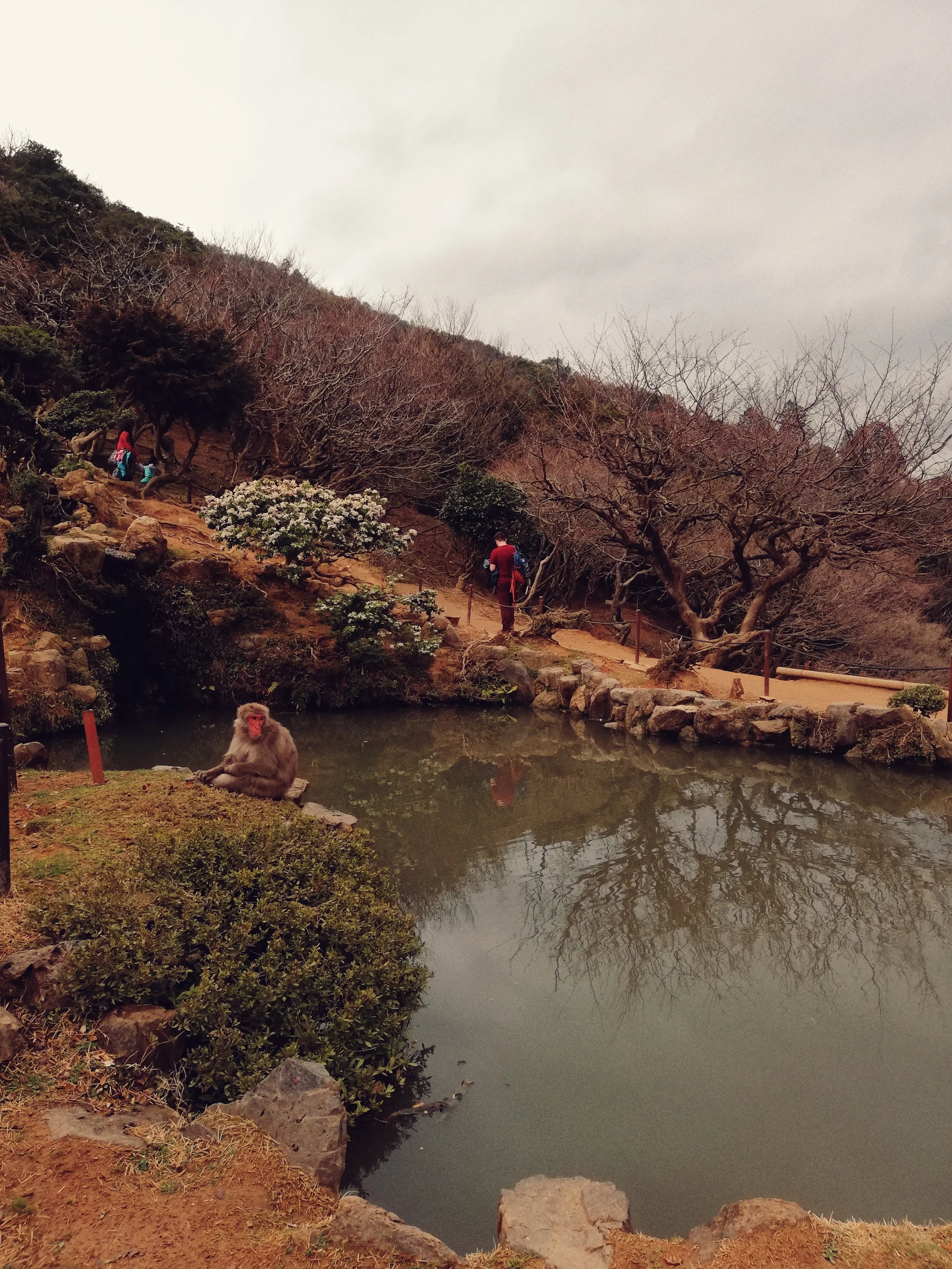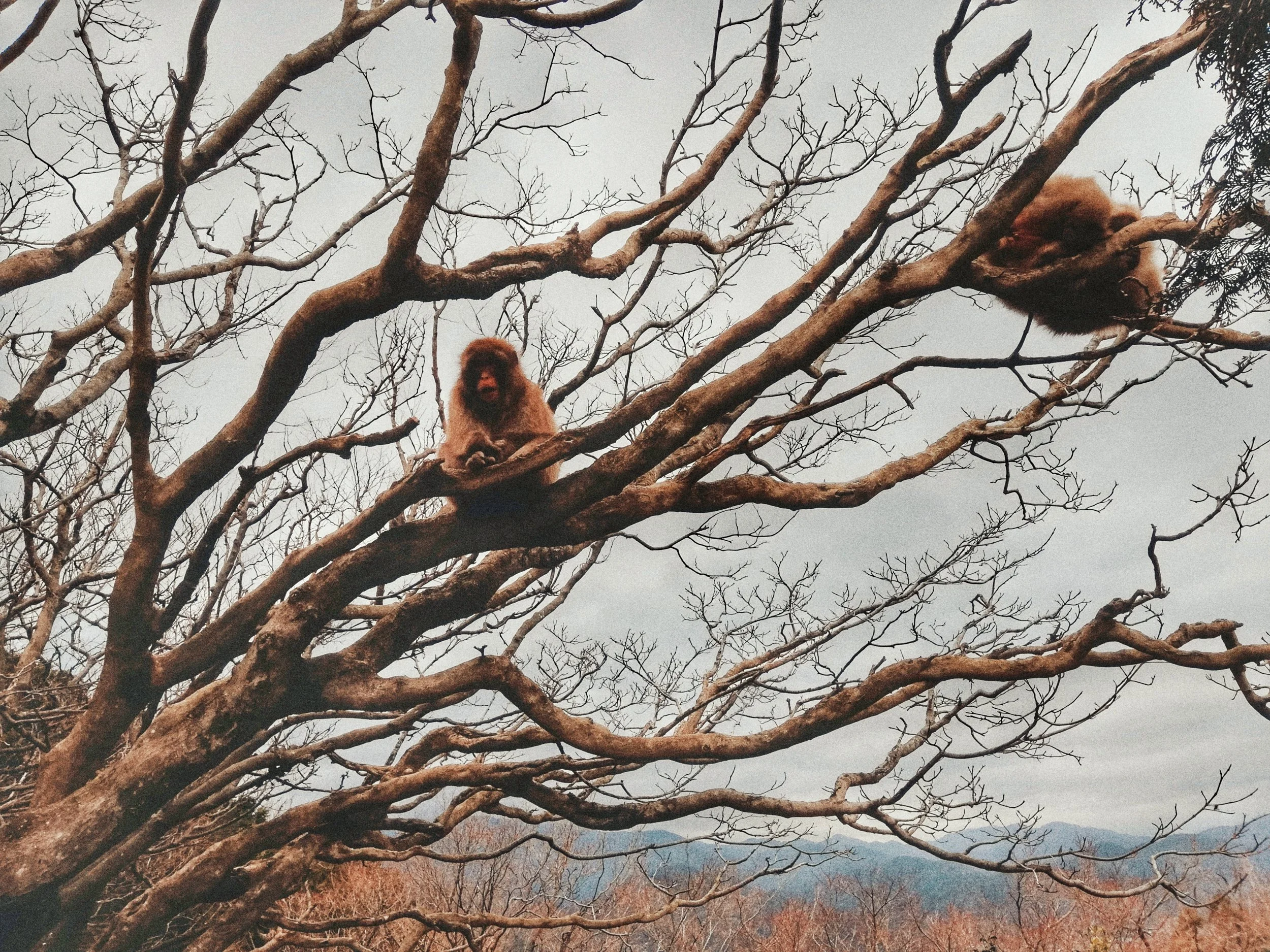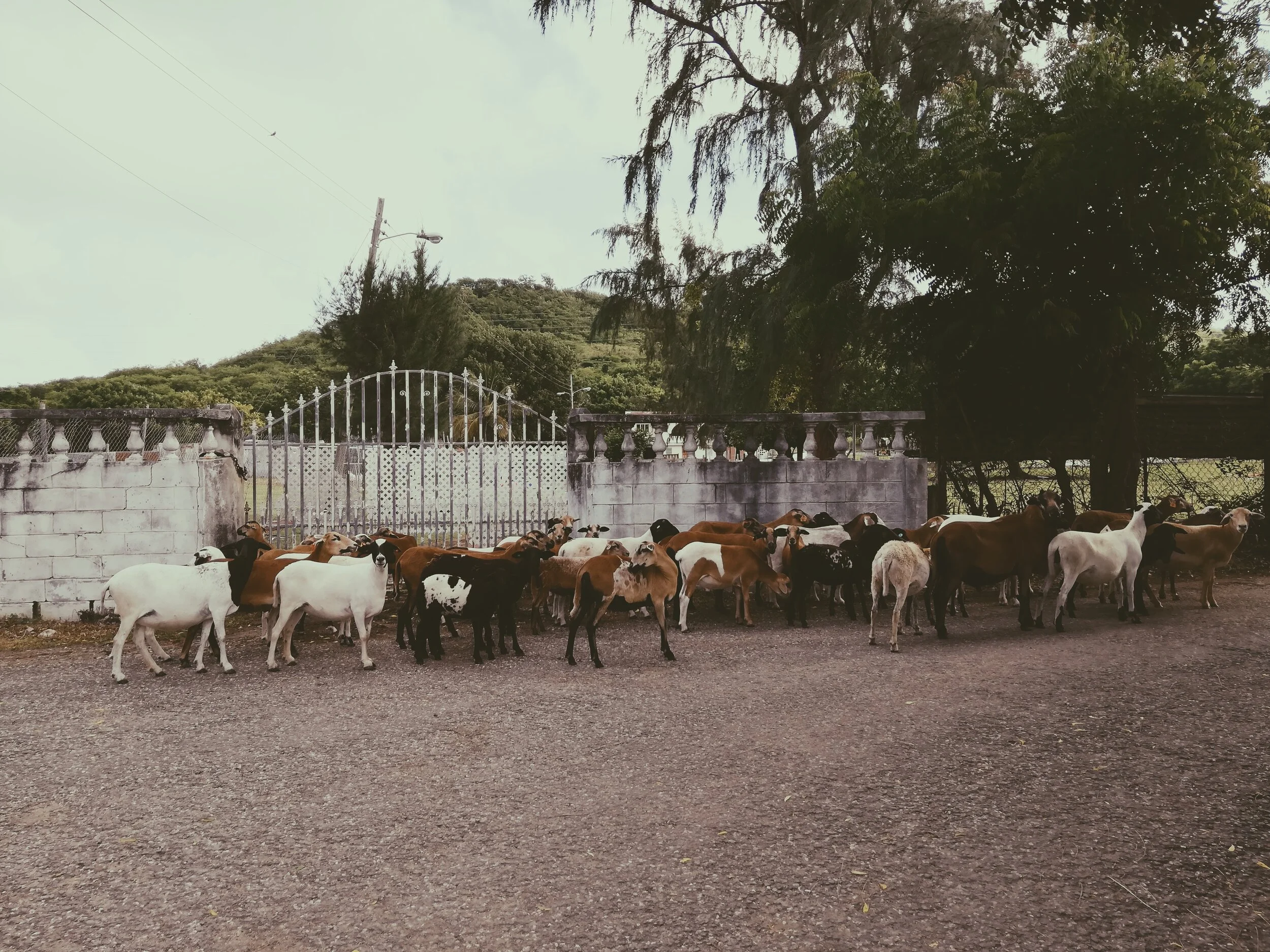Running Wild with Japanese Macaques
Providing an example of responsible wildlife tourism at work in Kyoto, Japan.
Japan’s old capital city of Kyoto is home to an estimated 1.5 million residents. And a troop of about 170 free roaming Japanese snow macaques just beyond the bridge crossing the Ōi River. For a mere 550 yen for adults and 250 yen for children, Iwatayama Monkey Park allows visitors the opportunity to interact with them. And I honestly don’t know which age bracket strikes a better bargain on the admission fees. The price already demonstrates that it is, quite clearly, not an elaborate moneymaking operation. For the experience, the price is unbelievable. For the easily winded and faint of heart, it’s a peace offering.
Iwatayama Monkey Park is located at the top of Kyoto’s Mt. Arashiyama. The park’s entrance is a 20 minute scenic upward climb from the mountain’s base. And if you want to experience wildlife tourism at its finest, this is the way to go. At the top of Mt. Arashiyama, park staff greet you as you arrive at what you hope is every visitor’s final destination. In both Japanese and English, they caution you to respect the macaques’ personal space and not to make direct eye or camera lense contact when approaching them. Body language holds very different meanings amongst non-human primates. In Japanese macaque society, direct and maintained eye contact is perceived as a sign of aggression or intimidation. So, it’s not that they’re trying to ruin your fun or prevent you from snapping the perfect monkey selfie. They’re just looking out for your safety and that of the animals. The last thing anyone would want to risk is the attack of a visitor, which could surely be reason enough to shut down the entire operation. And that would be quite a shame. Because again, and I can’t emphasize it enough, these guys are one of few who have gotten the ethics surrounding wildlife showcasing right.
One older macaque began to look visibly perturbed as a crowd of singularly focused tourists closed in on him with flashing lights and shuttering lenses. He was sitting against the scenic backdrop of what is an absolutely stunning panoramic view of Kyoto from one side of the mountain. As he began to curl his lip offering the crowd a hint of his pearly whites, I knew he was a millisecond away from snapping. He screeched and got up on his haunches, warning the mob that they were too close. A staff member calmly rushed in to disband the onlookers as the macaque took his leave, firmly reminding them not to crowd the animals. They don’t like it. And, really, neither do most people.
Visitors are allowed to walk in and amongst the macaques, ranging from young to old. Grooming one another at times and chasing one another in minor scuffles at others. You can walk away with as many photos of young macaques scratching their bright red butts as your little heart desires. And with only a minor hint of human influence, could you ask for more? That human influence being the staff members the macaques have come to love and respect from a distance and the small cabin built on park grounds. Visitors are allowed to feed the troop’s members from the safety of the cabin’s indoor feeding area, or what feels much like a human cage. But, that’s the way it should be. For 100 yen, visitors are given a bag of peanuts or apples to place into open palms through the wire mesh. Some macaques are pickier than others. I offered a peanut to a teenager who let me know my offering displeased him by shoving my hand to the side. My partner offered him fruit. He preferred the apples.
I can give Iwatayama Monkey Park a big thumbs up based on a most memorable first-hand experience. But, when choosing a wildlife attraction or encounter, always keep in mind that your eager social media following’s never going to be more important than yours or an animals’ wellbeing. There are many loosely transparent and extremely exploitative wildlife operations in business on domestic soil and overseas. And only a handful of facilities trying to combat the tide and do better.
Please be sure to do your research beyond TripAdvisor reviews and social media influencers’ captions before visiting any facility showcasing wildlife. Exercise healthy skepticism for facilities showcasing animals regularly performing or satisfying anthropomorphic behaviors. You don’t always know what your money may be funding, and effectively perpetuating, behind closed doors.
For some generous insight on captive wildlife encounters, be sure to skim National Geographic contributor Natasha Daly’s most recent investigative story, which appears in next month’s National Geographic magazine issue:






